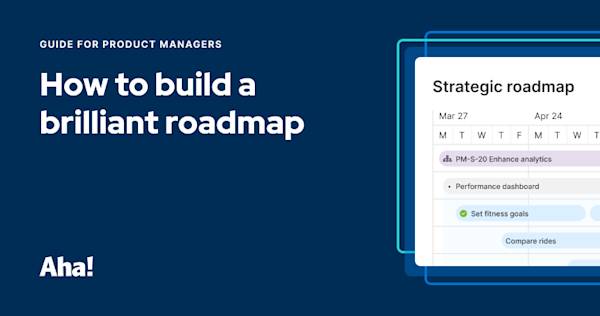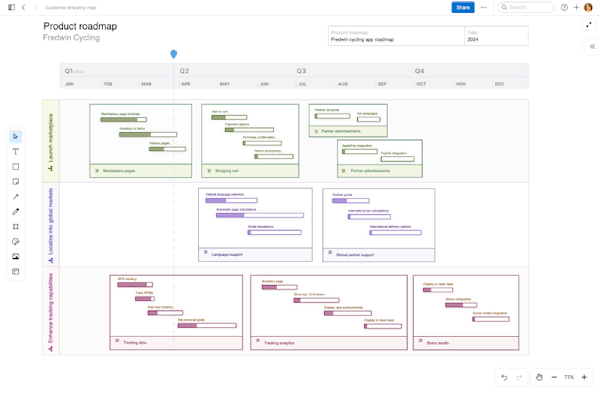Marketing responsibilities, best practices, and certifications
Marketing is dynamic and impactful. The details differ between industries, but at its most basic marketing is how businesses reach prospective customers and communicate the unique benefits of a product or service. It encompasses all the activities that companies undertake to promote, sell, and distribute that product or service. The goal is to generate sales and build a loyal customer base by informing prospective and existing buyers about the offering.
Your target audience must first be aware that your product or service exists before you can hope to inspire a purchase. An essential function in any business, marketing supports efforts to acquire, keep, and grow customers.
But marketing does not end there — ongoing engagement also helps build loyalty and establish a long-term relationship. Effective programs and campaigns reach and engage audiences, differentiate the company from competitors, and support larger business objectives, such as increasing sales or expanding to a new market.
Product and marketing teams love to collaborate in Aha! Roadmaps. Try it for free.
Feel free to jump ahead:
Marketing history
Marketing is as old as selling. The word “marketing” likely originates from Europe in the early 1500s, when traveling merchants sold food and other goods at town markets. But the practice of marketing is even older. Archeological evidence shows that ancient civilizations in Egypt, Greece, and Rome distributed advertisements and branded items for sale.
Marketing practices have evolved as society and technology have progressed. Here are some of the key developments from the past few centuries:
1800s | The Industrial Revolution introduced major innovations in technology, transportation, and mass production.
|
1900s | The advertising revolution ushered in new ways for businesses to broadcast their message and reach potential customers. Some of these new channels included radio (early 1920s), television (early 1940s), and the telephone (mid-1940s).
|
2000s | The digital revolution radically transformed marketing. In particular, the growing use of the internet opened up new ways to engage customers, leading to the rise of e-commerce and online marketing.
|
Marketing functional areas
Marketing is a diverse field. The structure and organization of a team can vary depending on several factors, including the industry, size of the company, and unique organizational needs. A small startup may have only one dedicated marketing professional, while a multinational corporation may have hundreds.
No matter how it is organized, a marketing team is typically responsible for the following functions:
Brand marketing
Channel marketing
Communications
Email marketing
Media relations and PR
Partner marketing
Search engine marketing
Marketing responsibilities
Responsibilities can vary greatly depending on the specific role and type of organization. But most marketing roles share a few common areas of focus. In general, these include setting (or implementing) the strategy and planning (or implementing) programs and campaigns. Leaders are typically tasked with presenting strategic marketing plans and progress to executives and representing the group’s work at cross-functional meetings. Marketing teammates usually focus on more tactical activities, such as crafting messaging or monitoring analytics to track the performance of campaigns. No matter what your role is, you are ultimately responsible for driving the growth of the business. Some of the core activities include:
Defining the marketing strategy
Conducting market research
Performing competitive differentiation
Crafting positioning and messaging
Building marketing roadmaps
Generating leads
Running A/B tests
Optimizing landing pages
Communicating with customers
Preparing for product launches
Cultivating press and analyst relations
Raising brand awareness
Related:
Marketing certifications
A job in marketing is usually fast-paced and highly collaborative — requiring you to stay abreast of trends and constantly hone your skills. To be successful, you need to know the marketing terms, have the right skills, and grasp how the different roles work together. Given the importance of technology to digital marketing, it is also helpful to be familiar with the tools customers use. As demand for proficient marketing professionals has grown, several companies, organizations, and universities have started offering online training and certificate programs. If you are interested in pursuing a new role or building upon your existing skills, there are many options. Here is a short list of some of the more popular ones:
Cornell University Online Marketing Certificates
Cornell offers seven online programs in brand management, corporate communication, digital marketing, digital photography, integrated marketing, marketing analytics, and marketing strategy. Courses are designed for a broad audience — everyone from marketing managers and public relations professionals to entrepreneurs can benefit. Find out more here.
Google Ads Certification
Becoming certified in Google Ads means that you have mastered Google’s online advertising platform. There are multiple certifications available, including search, display, and video. Depending on which certification you pursue, you may learn how to build and optimize campaigns or use YouTube to reach your audience and boost conversions. Learn more about the Google Ads Certification here.
Google Analytics Individual Qualification
Google Analytics is an important tool for digital marketers. It gives data and insights to better understand your audience — visitors to your website, prospects, and customers. The Google Analytics Individual Qualification shows your proficiency in Google Analytics. Read more here.
Microsoft Advertising Certified Professional
This free program from Microsoft is aimed at digital marketers and advertisers who want to maximize their knowledge of Microsoft’s PPC advertising platform. The program consists of a series of courses and an exam covering everything from the fundamentals of search engine marketing to how to optimize your budget. Explore the program here.
MIT Sloan Executive Education Programs
The MIT Sloan School of Management offers a variety of courses, certificates, and custom programs for individuals who want to build upon their leadership skills and advance their careers. Although not all courses are geared specifically towards marketing professionals, several are. These include classes on marketing innovation, digital marketing analytics, and pricing. Find out more about the program here.
Pragmatic Institute’s Product Marketing Management Certification
Pragmatic Institute offers courses in product marketing (as well as product management) with six levels of certification. Current or aspiring product marketing managers can learn how to identify a target market, create a launch plan, and set a pricing strategy. Learn more about the courses here.
Professional Certified Marketer
The American Marketing Association offers this program to help marketing professionals expand their knowledge and grow their skills. Depending on your specialty, there are multiple Professional Certified Marketer tracks — digital marketing, sales management, content marketing, and marketing management. Find out more about the certifications here.
Start building your marketing skills
Marketing teams use a variety of tools and tactics to strategize, plan, and launch programs and campaigns. The articles in this section of the marketing guide will teach you how a team functions and how each role contributes to driving the growth of the business.
Plan, collaborate, and launch — all in one tool. Sign up for a free trial of Aha! Roadmaps.


